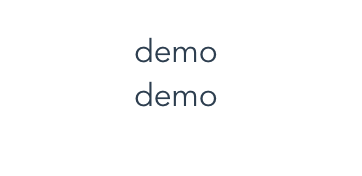vue中的provide/inject的学习使用
irst:定义一个parent component
|
1
2
3
4
5
6
7
8
9
10
11
12
13
14
15
16
17
|
<template> <div><childOne></childOne> </div></template><script> import childOne from '../components/test/ChildOne' export default { name: "Parent", provide: { for: "demo" }, components:{ childOne } } |
在这里我们在父组件中provide for这个变量。
second 定义一个子组件
|
1
2
3
4
5
6
7
8
9
10
11
12
13
14
15
16
17
18
19
20
21
22
|
<template> <div> {{demo}} <childtwo></childtwo> </div></template><script> import childtwo from './ChildTwo' export default { name: "childOne", inject: ['for'], data() { return { demo: this.for } }, components: { childtwo } }</script> |
third 定义另一个子组件
|
1
2
3
4
5
6
7
8
9
10
11
12
13
14
15
16
17
|
<template> <div> {{demo}} </div></template><script> export default { name: "", inject: ['for'], data() { return { demo: this.for } } }</script> |
在2个子组件中我们使用jnject注入了provide提供的变量for,并将它提供给了data属性。
这里官网注明例子只工作在 Vue 2.2.1 或更高版本。低于这个版本时,注入的值会在 props 和 data 初始化之后得到。
运行之后看下结果

从上面这个例子可以看出,只要在父组件中调用了,那么在这个父组件生效的生命周期内,所有的子组件都可以调用inject来注入父组件中的值。







 浙公网安备 33010602011771号
浙公网安备 33010602011771号